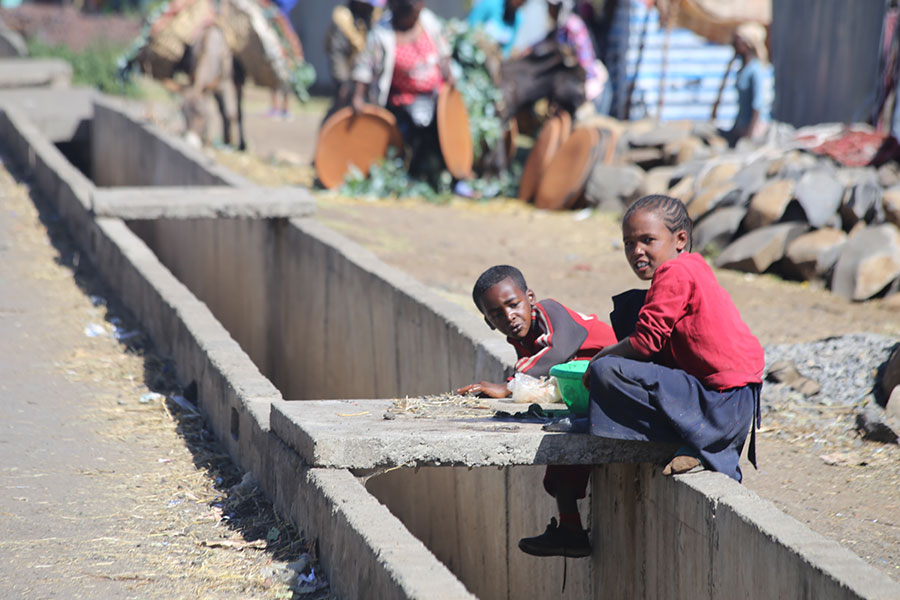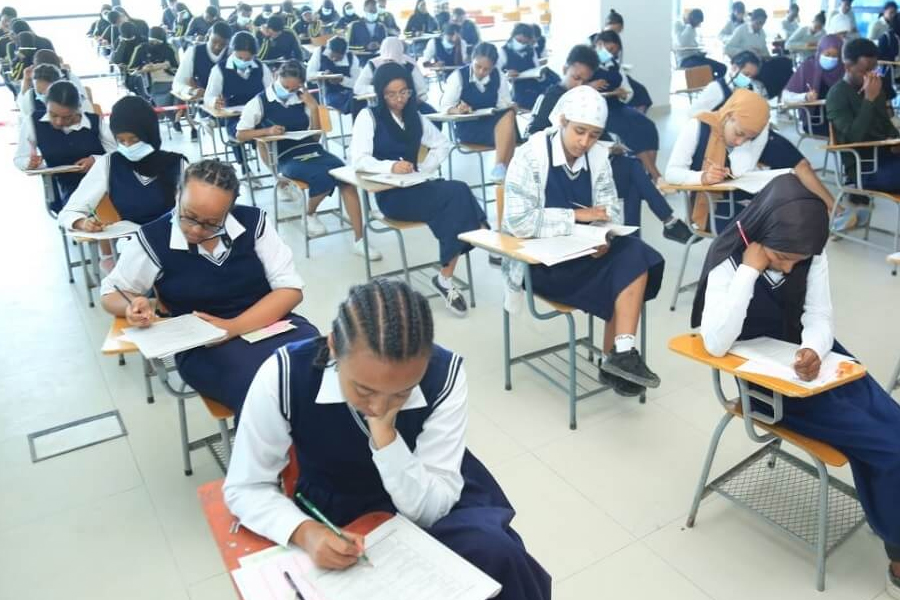
Feb 4 , 2023.
Rene Lefort is a French journalist with a keen interest in Ethiopia, spanning over half a century. His regular and extensive writings on abounding things in Ethiopia reflect his understanding of nuances, informed and shaped by decades of intense engagement with the broader Horn of Africa region.
One of his Tweets posted last week could not have been more alarming.
Says Lefort: “The Ethiopian educational system is crumbling.”
He should look no further to back up his claim than the findings of the Ministry of Education in 2018 on the exam results of Grade 12 students. They scored lower in almost all subjects that year than four years earlier. The composite score difference in the eight years beginning in 2010 was 6.1 points, “indicating that students’ performance is declining,” according to the Ministry.
Ironically, few were prepared for a revelation whose shocks revibrated like a sea current when Ethiopia’s education officials disclosed two weeks ago that only a fraction of the almost 900,000 secondary school students who sat for college entrance exams passed the average marks. A staggering number, 97pc, has failed to secure spots in colleges. The Education Minister, Brehanu Nega (Prof.), uttered, “shocking”.
After all, only 28.6pc of the teachers instructing Grades 11 and 12 students were found qualified, showed a study the Ministry of Education commissioned in 2021.
It is an indictment of the education system and a country with a quarter of its secondary schools with no students passing the exam. Never mind that Ethiopia became one of only five countries in the world with the largest number of children out of school, according to data from Unicef, the UN agency working for the wellbeing of children.
This is another layer of disclosure that flies in the face of Ethiopia’s leaders, who had targeted enrolling 25pc of secondary school graduates in higher education institutions. The high failure rate also exposes the dire state of Ethiopia’s education system and the immense challenges its youth face in obtaining higher education. The “crumbling” education system Lefort spoke of has severe implications for Ethiopia’s future. Its youth has been deprived of opportunities to acquire the skills and knowledge necessary for a successful career, leaving them trapped in a cycle of poverty and unemployment.
In an era where the world is poised to dawn a digital divide, a country with almost three-quarters of its population under the age of 29 cannot afford to have a technologically excluded and economically marginalised populace.
Sadly, the recent unfolding in the education sector demonstrated that a population under exclusion and marginalisation is building up. The high failure rate that took many by storm can be seen as a reflection of a rather profound failure of society on many levels.
It may be unfair to point fingers at the current office holders at Arat Kilo, where the Ministry’s head office was built under Emperor Hailesellasie. He was credited for attaching the indispensability of education to enlighten a generation and transform a country; he had moonlighted as an education minister for some years.
Many remain nostalgic for the Emperor’s reign as a golden era of Ethiopia’s education. His time was not on a judgment about the quality of education and the competence of its product.
Instead, access to higher education was limited, with a handful of colleges enrolling a couple of thousands coming from as few secondary schools sprinkled across the country. In the late 60s', only 23 secondary schools were teaching 31,000 students from a population of over 25 million. A study by the World Bank established that only one percent of children with access to education reached high schools that used to send no more than 1,000 to colleges annually.
It had been a far cry compared to 46,361 schools, where nearly 700,000 teachers are providing education to over 26 million students this year.
With a growth in population and a swelling enrollment in primary and secondary schools, broadening access and ensuring as much inclusivity as possible would have become logical priorities for subsequent governments. The EPRDFites would have no match in this.
Under their rule, higher education institutions expanded exponentially from less than a handful of universities to over 50 in two decades. So has the annual intake ballooned from a mere 5,000 in the 1980s to around 300,000 last year.
This did not happen without their ideological resolve to direct significant resources to social spending, mainly health and education. Ethiopia’s national expenditure on education more than doubled from 36.1 billion Br in four years to 2017, allowing the federal government to spend 14,500 Br for every student in high school. The Revolutionary Democrats designed and implemented a series of education sector development programs, with the fifth edition seeing a whopping investment of 8.2 billion dollars.
Such commitment and public investments have not been without their limitations. Regional disparities and quality provision of training became the causalities of unprecedented growth and expansion in a country where 52.5pc of parents surveyed ranked teaching as “a high prestige profession.” The Ministry, which commissioned the survey in 2019, would have wanted the percentage to reach 60pc.
Yet, the higher education sector faces a brain drain, as many qualified teachers and professors leave the country searching for better opportunities abroad. A trend of decades, this is exacerbated the shortage of qualified personnel and further hindered the ability of the sector to develop and grow.
Inspections conducted by the Ministry two years ago revealed that “the majority of primary and secondary schools” are below “standards”. The reasons for this are several, as the impacts are consequential. Authorities attribute poor classrooms and pedagogical facilities, lack of qualified teachers and staff, inadequate education materials, and inconsistent professional development programs undercutting the provision of a good education.
The outcome is an army of young women and men across the country stunted by an education regime meant to help their betterment. The disparity among students residing in the various regional states is no less troublesome, leading to unequal opportunity and lopsided equity.
This will only aggravate the high unemployment rate among women and youth, in particular. The correlation of disparity in access to education, unemployment and inflation with regional states such as Benishangul and Afar against Addis Abeba, Dire Daw and Harer should be a curious subject for those keenly watching these developments. In contrast, the latter has seen high student enrollment, low drop-out rates, and a higher number of students going to colleges but with moderate inflation and lower unemployment.
Authorities in charge of the education sector may try to cut corners, devising a way to put hundreds of students into year-long lessons before they sit for another exam. This can only help remove the shame from the surface. The trouble did not start now, and a brief and short-term hashing up would hardly address it.
The failure of a massive number of students to enter college should serve as a wake-up call for society as a whole. It should signal that the root causes of this crisis cut deeper than a problem of one particular sector.
PUBLISHED ON
Feb 04,2023 [ VOL
23 , NO
1188]

Commentaries | Jun 18,2022

Radar | May 09,2020

Radar | Dec 04,2022

Fortune News | Oct 23,2018

Agenda | Jul 08,2023

Radar | Dec 29,2018

Viewpoints | Jan 26,2019

Delicate Number | May 17,2025

Fortune News | Jan 01,2023

Radar | Jan 26,2019

My Opinion | 131451 Views | Aug 14,2021

My Opinion | 127803 Views | Aug 21,2021

My Opinion | 125783 Views | Sep 10,2021

My Opinion | 123419 Views | Aug 07,2021

Dec 22 , 2024 . By TIZITA SHEWAFERAW
Charged with transforming colossal state-owned enterprises into modern and competitiv...

Aug 18 , 2024 . By AKSAH ITALO
Although predictable Yonas Zerihun's job in the ride-hailing service is not immune to...

Jul 28 , 2024 . By TIZITA SHEWAFERAW
Unhabitual, perhaps too many, Samuel Gebreyohannes, 38, used to occasionally enjoy a couple of beers at breakfast. However, he recently swit...

Jul 13 , 2024 . By AKSAH ITALO
Investors who rely on tractors, trucks, and field vehicles for commuting, transporting commodities, and f...

Jun 29 , 2025
Addis Abeba's first rains have coincided with a sweeping rise in private school tuition, prompting the city's education...

Jun 29 , 2025 . By BEZAWIT HULUAGER
Central Bank Governor Mamo Mihretu claimed a bold reconfiguration of monetary policy...

Jun 29 , 2025 . By BEZAWIT HULUAGER
The federal government is betting on a sweeping overhaul of the driver licensing regi...

Jun 29 , 2025 . By NAHOM AYELE
Gadaa Bank has listed 1.2 million shares on the Ethiopian Securities Exchange (ESX),...